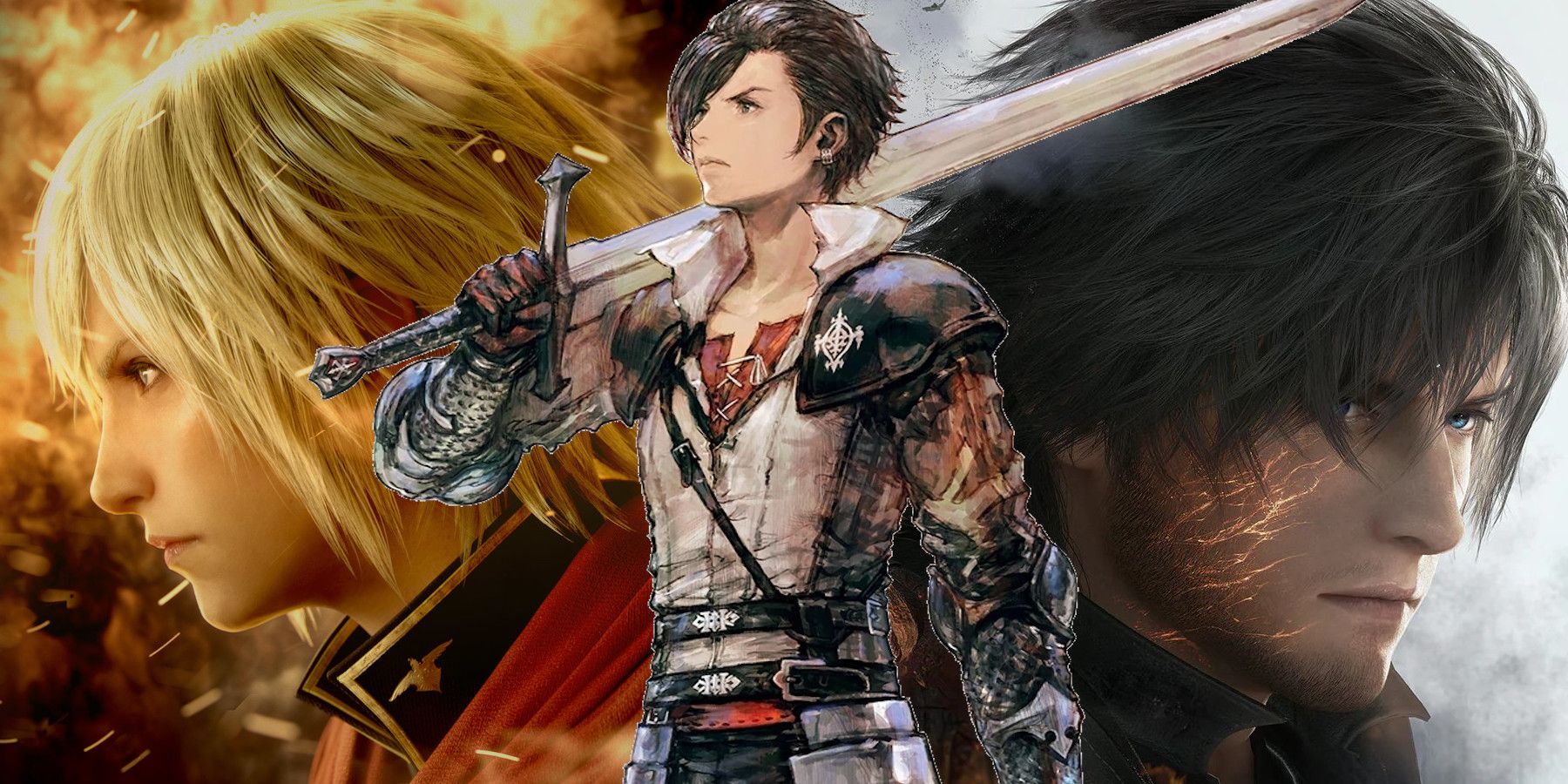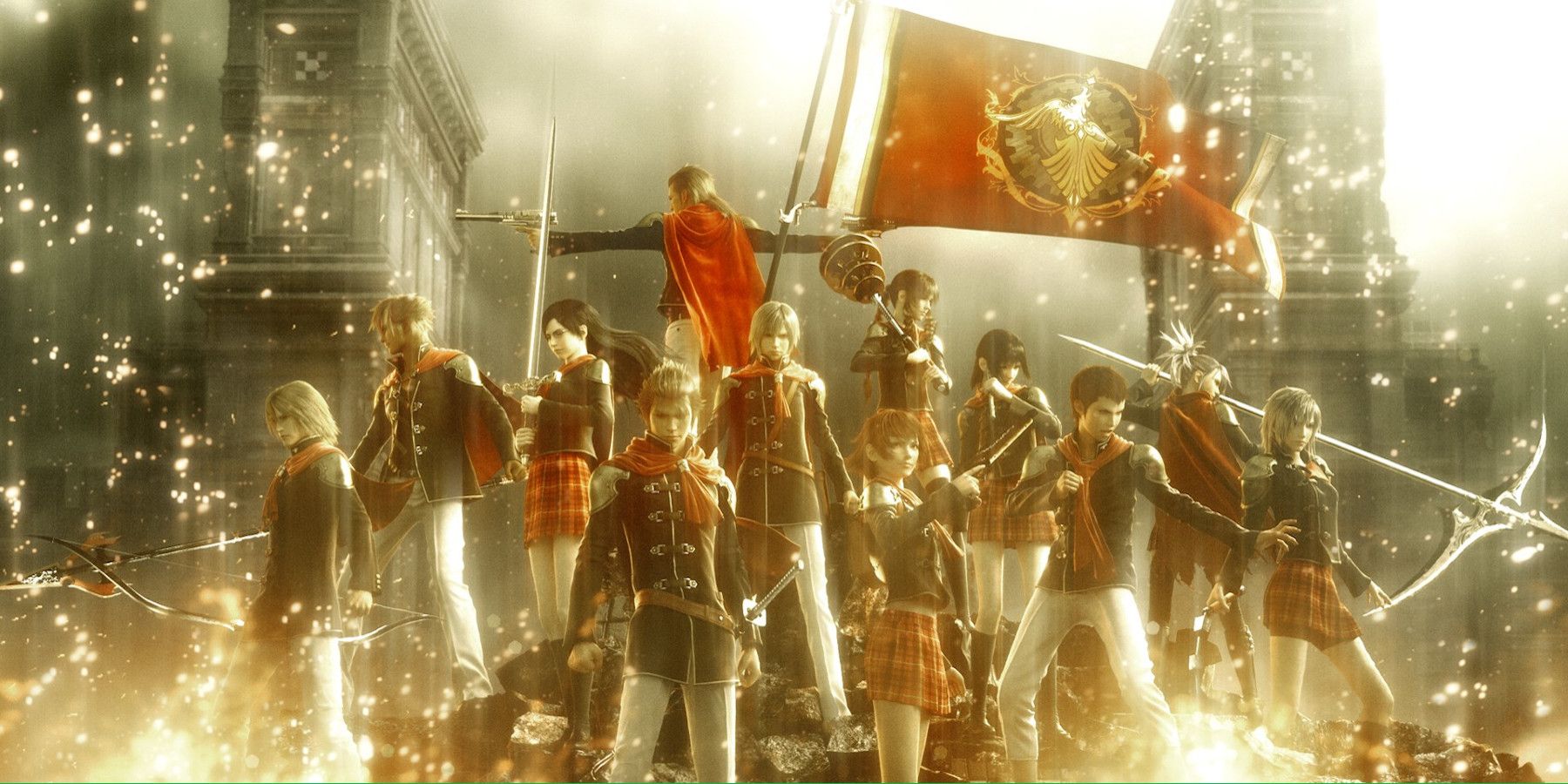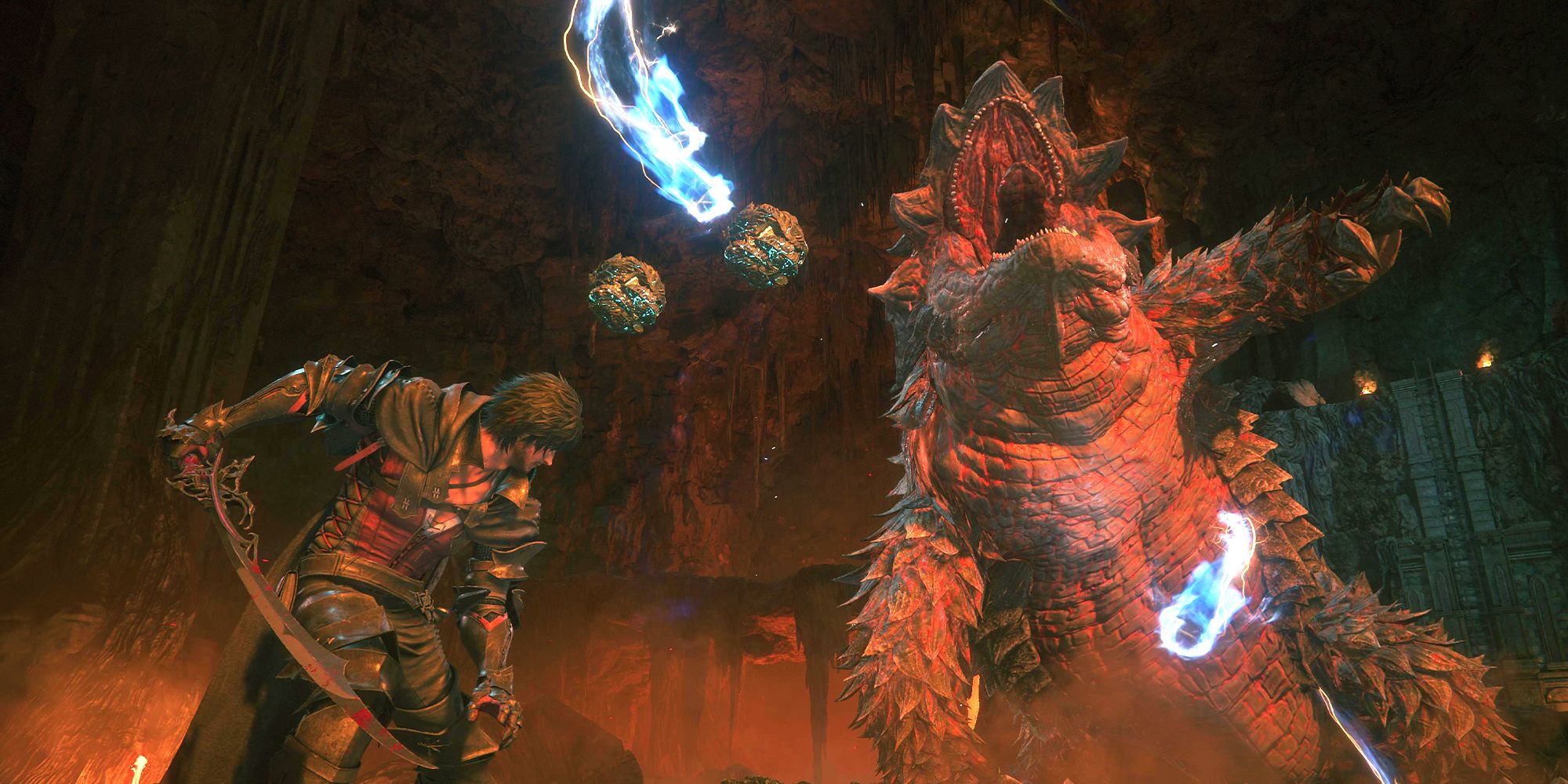Before Final Fantasy XVI introduced players to the war-torn Valisthea, the series tried to deliver a similarly gritty and violent story in its first M-rated installment, Final Fantasy Type-0. Although Type-0 never received the same level of attention or praise as many other Final Fantasy titles, it's notable for featuring one of the darkest and most ambitious stories in the franchise. More importantly, Type-0's bleaker take on classic Final Fantasy tropes helped shape the emotional narrative that drives Final Fantasy XVI.
Final Fantasy Type-0 follows Class Zero, a group of 14 elite students trained in magic and combat at a facility known as Akademeia. After the totalitarian Militesi Empire launches an invasion against their home, the group is thrust into the front lines of war. Whereas most Final Fantasy games focus on a small group of characters, Type-0 presents its story on a much grander scale by chronicling the struggles of the political figures and individual soldiers that are caught in the global conflict.
Type-0 Embraces and Subverts the Series' Tropes
Final Fantasy has never shied away from tragedy or mature subject matter, but Type-0 uses its M-rating to stand out from its predecessors. Type-0 depicts battles as brutal and desperate affairs, with even Class Zero's successes being punctuated by reminders of the mass casualties in each battle. Adding to the bleak tone is the game's focus on the global politics and military operations of each battle. Seeing how tensions between various political factions force Class Zero into increasingly dire situations gives the world a cold and uncaring atmosphere that's bolstered with every new story revelation.
The tone is balanced by the calmer sections between missions, wherein players can chat with the various characters around Akademeia or explore the open world to fight monsters and complete side quests. These sections offer a welcome reprieve from the harshness of the main story and feel closer to the traditional Final Fantasy experience than the rest of Type-0. However, the lighter tone parts ultimately serves to disarm players and make Class Zero's return to the blood-soaked battlefields feel like being ripped away from the comfort of their daily lives. Most of all, it cements Type-0 as a game that deliberately preys on the player's assumption of what defines a Final Fantasy game and constantly defies those expectations.
Unfortunately, Type-0's rich narrative and intriguing concepts are let down by its lackluster presentation and inconsistent writing. Multiple plot points are presented through dull exposition over a still image, which severely undermines their significance. The game explains most of its fictional terminology and extensive lore in optional documents, meaning players who skip this reading material may struggle to understand the story. Worst of all, Type-0 barely characterizes Class Zero beyond their one-note personalities, leaving players with little reason to get emotionally invested in the cast or their struggles.
Final Fantasy XVI Delivers a More Mature Take on Type-0's Themes
Final Fantasy XVI follows a similar set-up as Type-0, with protagonist Clive Rosfield forced to enter a devastating war after his home is suddenly invaded by a powerful empire. The similarities continue with their shared focus on political drama and graphic violence. While Type-0 primarily used its M-rating to subvert series expectations, XVI uses its brutality and mature content to strengthen Final Fantasy's best aspects.
Before delving into its ruthless conflict, the game spends its opening hours developing its characters by highlighting their unique personalities, conflicting ideologies, and complex relationships. Whereas Type-0 unfortunately mistakes its extreme violence and tragic scenarios for deep and engaging storytelling, XVI understands that well-defined characters and their personal struggles are the emotional hooks behind Final Fantasy's best stories.
By fleshing out its world and cast, Final Fantasy XVI brings substance to the cruelty and bloodshed of its central conflict. The game's detailed battles and vivid deaths scenes not only emphasize the danger of Clive's journey but also give certain story moments a far greater emotional impact. XVI's writing is already excellent on its own, but the game's graphic depictions of violence give certain moments a nightmarish quality that makes their emotional impact on the characters far more understandable.
Clive's journey may not match the ambitious scope of Type-0, but Final Fantasy XVI's smaller scale and more memorable cast give its story the depth and focus that its predecessor sorely lacked. XVI tackles many of the same themes as Type-0, with a heavy emphasis on the brutality of war and the consequences it has on both nations and individuals. However, by recontextualizing the premise and violence of Type-0 as catalysts for a more character-focused adventure, Final Fantasy XVI succeeds at immersing players in its world and captivating them with a truly mature narrative.



